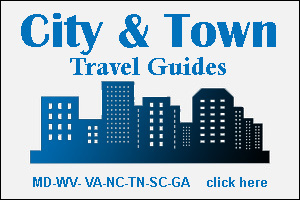Charlottesville Virginia
“A Great Place To Live For All of Our Citizens”
- Charlottesville VA Arts and Crafts
- Charlottesville VA Attractions
- Charlottesville VA Bed and Breakfasts
- Charlottesville VA Breweries
- Charlottesville VA Cabin Rentals
- Charlottesville VA Campgrounds
- Charlottesville VA Hotel, Motel, Inn
- Charlottesville VA Festivals
- Charlottesville VA Outdoor
- Charlottesville VA Performing Arts
- Charlottesville VA Restaurants
- Charlottesville VA Real Estate
- Charlottesville VA Shopping
- Charlottesville VA Travel Tours
- Charlottesville VA Weddings
- Charlottesville VA Wineries
City of Charlottesville VA
The city of Charlottesville is located in Albemarle County Virginia and home to the University of Virginia. Charlottesville is a gateway to Shenandoah National Park, and the Blue Ridge Parkway. Charlottesville for being a small city has many attractions and venues. Visitors come to the area for wine and beer tours, ballooning, hiking, and world-class musical entertainment The city is home to the Dave Matthews Band and also has a great independent music scene.
The city of Charlottesville was the home of three presidents of the United States; Thomas Jefferson, James Madison, and James Monroe. There historical homes are located within 30 miles of the city.
The nearby Shenandoah National Park offers recreational activities, beautiful scenery, rolling mountains, hiking trails, waterfalls, campgrounds, and scenic overlooks (for more Information visit www.skylinedriveoverlooks.com ). The Skyline Drive is a scenic drive that runs the length of the park for 120 miles through the Northern Blue Ridge Mountains of Virginia. A junction where The Skyline Drive ends and The Blue Ridge Parkway begins is 22 miles West of Charlottesville. The Blue Ridge Parkway, a similar scenic drive extends 469 miles south to the Great Smoky Mountains National Park in North Carolina.
Charlottesville’s downtown is a center for business and tourism and is home to the Downtown Mall, one of the longest outdoor pedestrian malls in the nation, with stores, restaurants, and attractions.
Charlottesville is host to the annual Virginia Film Festival in October, the Charlottesville Festival of the Photograph in June, and the Virginia Festival of the Book in March. In addition, the Foxfield Races are steeplechase races held in April and September of each year. A Fourth of July celebration, including a Naturalization Ceremony, is held annually at Monticello, and a First Night celebration has been held on the Downtown Mall since 1982.
History of Charlottesville VA
The city of Charlottesville and Albemarle County are steeped in rich history. An Act of the Assembly of Albemarle County established Charlottesville in 1762. Albemarle County itself was named for a colonial figure, the second Earl of Albemarle, who was at the time the governor of the Virginia Colony. Charlottesville took its name in honor of Princess Charlotte, who became queen of England when she married King George III in 1761. In 1819, the most famous figure in local history, Thomas Jefferson, founded the University of Virginia. The town of Charlottesville VA officially became a city in 1888. Nicholas Meriwether II, patented c. 15,000 acres of land along the Southwest Mountains, including 1,190 acres of “The Farm” that comprise a good deal of modern Charlottesville.
The city of Charlottesville was situated along a trade route called Three Notched Road (present day U.S. Route 250), which connected Richmond to the Blue Ridge Mountains. For years, pioneers and travelers had worn a Monacan Indian hunting path into what became the Three Notched Road.
During the American Revolutionary War, Congress imprisoned the British army and German prisoners in Charlottesville at the Albemarle Barracks between 1779 and 1781. Many of the area’s familiar names today are references to its colonial-era past. Residents and visitors know “Barracks” as a road and shopping center.
In 1850, Charlottesville welcomed its first railroad dramatically expanding shipping through the area and creating prosperity and growth.
During the Civil War, the town of Charlottesville was largely untouched, despite it being a manufacturing center for Confederate uniforms and tending countless wounded Confederate soldiers at the overrun University hospital.
By 1887, the city had received its first horse drawn streetcars. In 1888, Charlottesville incorporated and annexed surrounding land to create a city of nearly 800 acres.
The twentieth century brought more rail and trolley lines as well as paved roads, and although the area’s culture and commerce remains rooted in agriculture, the G.I. Bill drove rapid expansion at the University after World War II, making it the area’s largest employer.
Today, the spirit of Thomas Jefferson draws millions of visitors from around the world. Agriculture still thrives in the region, creating a rich farm-to-table culinary culture complemented by one of the country’s finest wine making regions.

